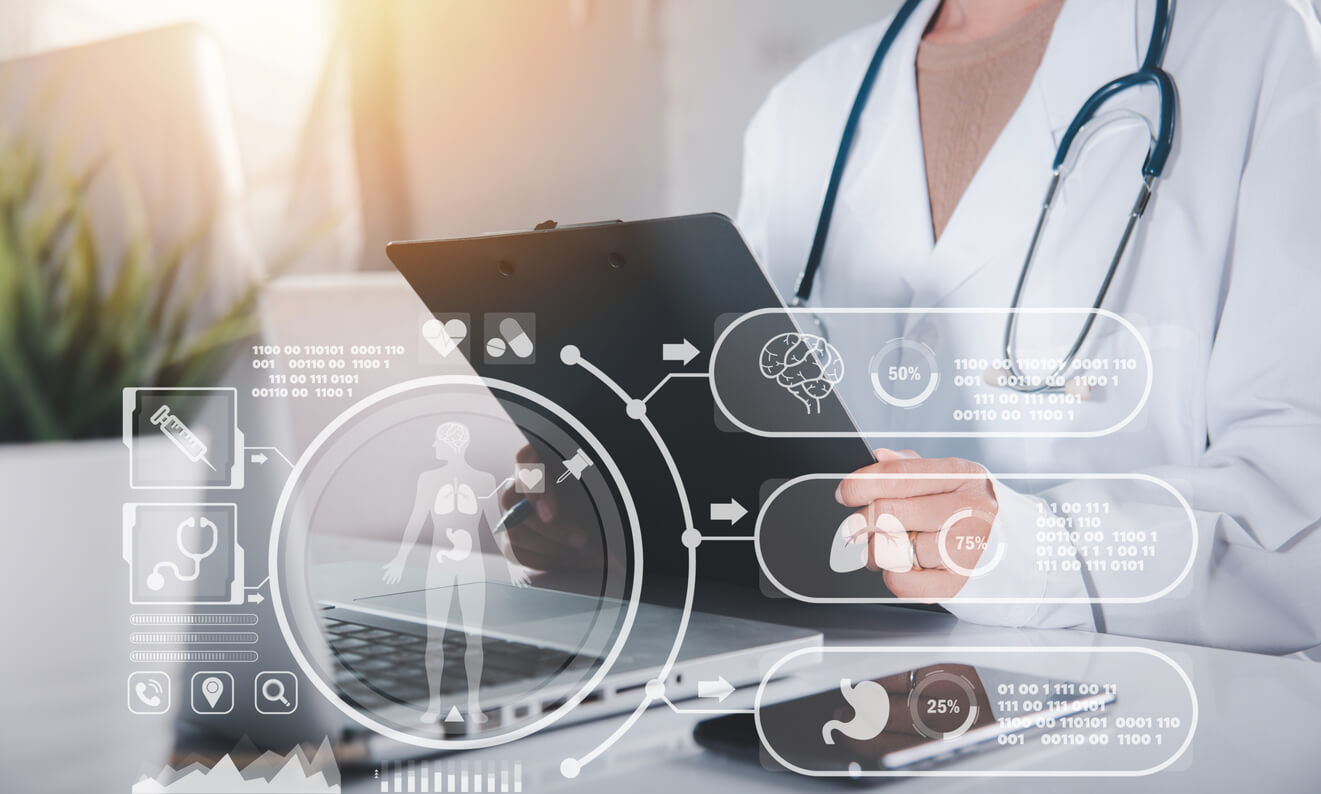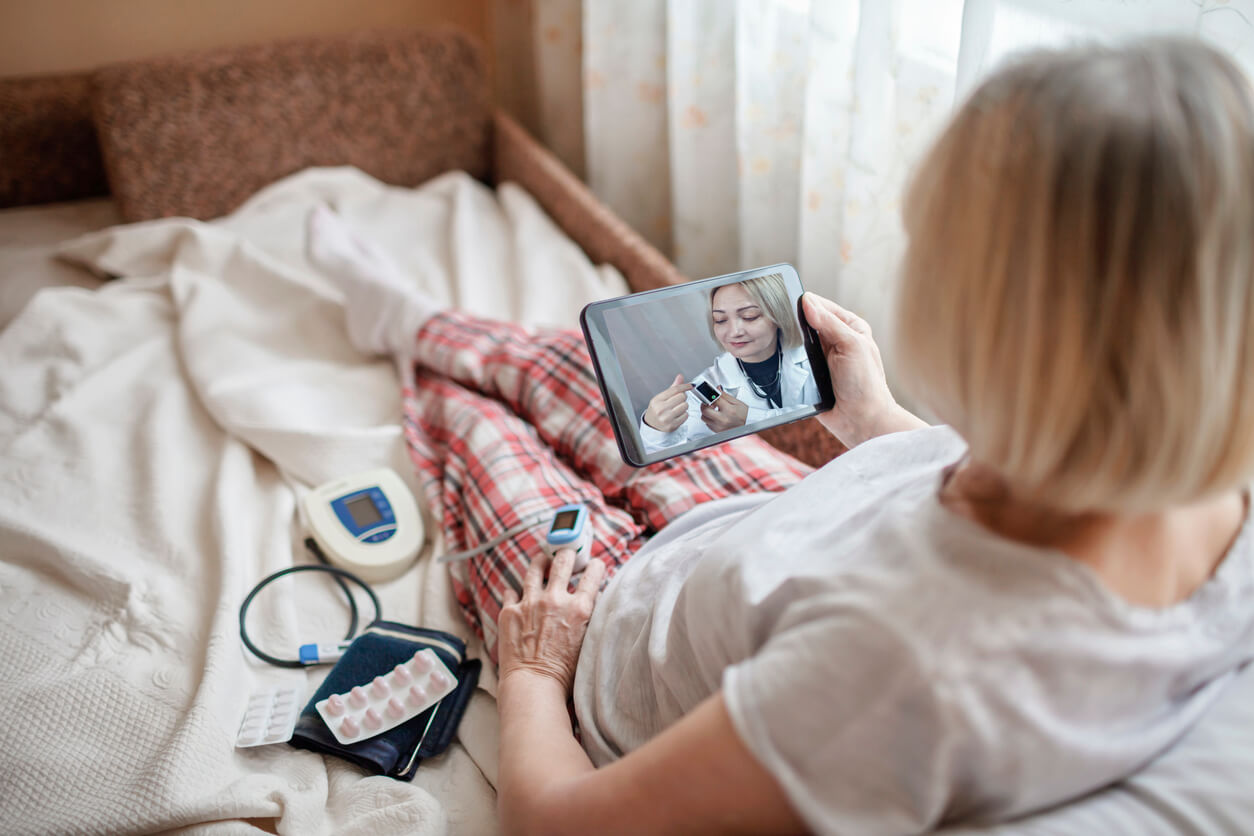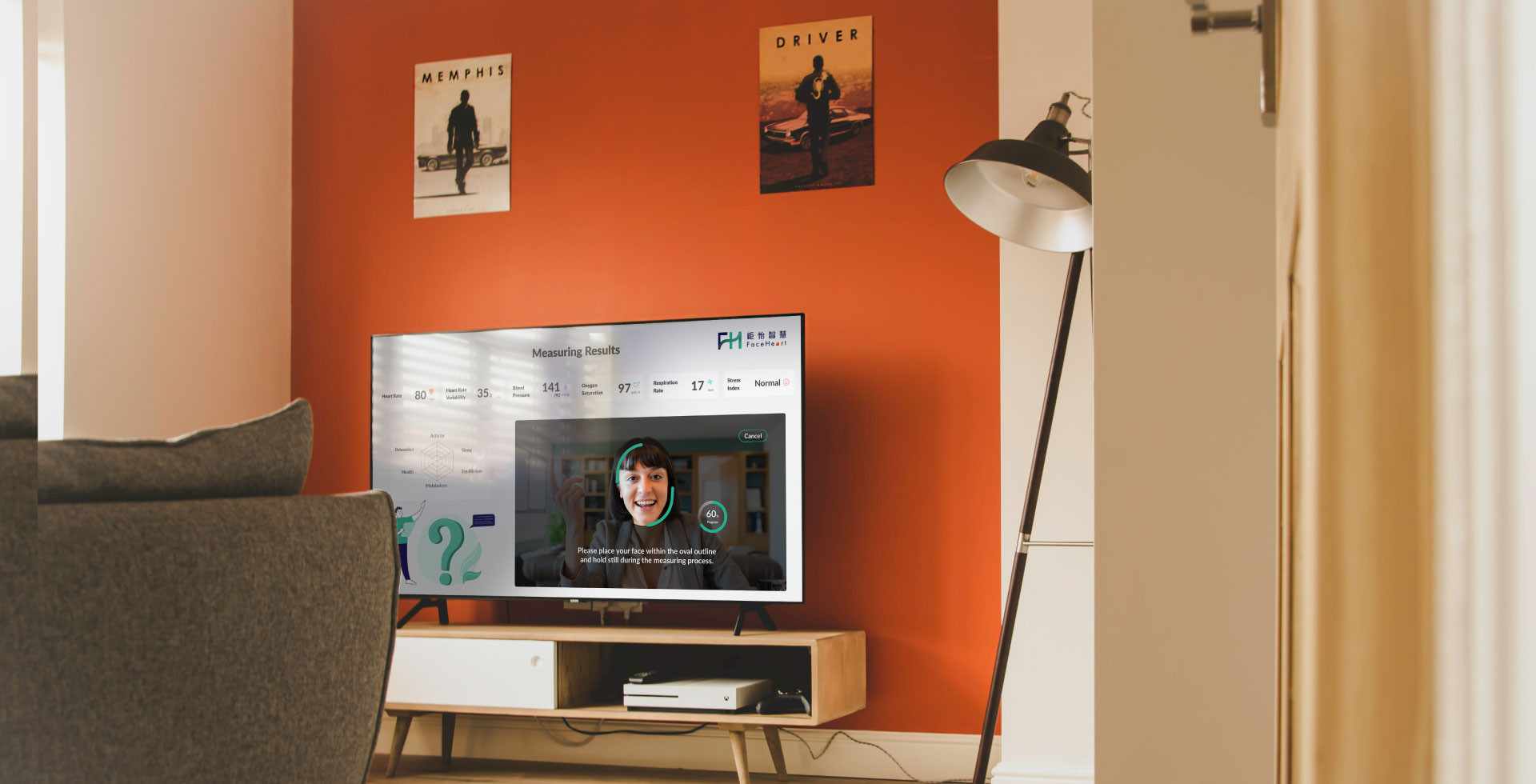Published date: 2025-08-11 Last updated: 2025-12-19
As the demand for remote healthcare grows globally—especially in the U.S.—Remote Patient Monitoring Devices (RPM devices) and Contactless Vital Sign Measurement technologies are transforming the way vital health data is captured, analyzed, and utilized. From traditional wearables to AI-powered contactless solutions, this guide provides a comprehensive view of the technologies, regulatory considerations, clinical applications, and future trends driving this evolution.
 Remote patient monitoring devices are digital health tools that enable healthcare professionals to collect patients’ physiological data in real time or at regular intervals—without the need of in-person visits. These devices play a crucial role in chronic disease management, including conditions such as heart disease, diabetes, and asthma. The applications of remote patient monitoring have also expanded to cover acute illness care, oncology, sleep disorders, and even maternal health monitoring.
Remote patient monitoring devices are digital health tools that enable healthcare professionals to collect patients’ physiological data in real time or at regular intervals—without the need of in-person visits. These devices play a crucial role in chronic disease management, including conditions such as heart disease, diabetes, and asthma. The applications of remote patient monitoring have also expanded to cover acute illness care, oncology, sleep disorders, and even maternal health monitoring.
As of 2025, a wide range of remote patient monitoring devices are commonly in use, including:
While some of these devices are integrated into hospital systems, many are designed for home use, empowering patients to manage their health independently. Most RPM devices can seamlessly transmit physiological data to secure medical platforms, allowing healthcare providers to assess trends, detect anomalies, and make timely clinical decisions.
Patient Monitoring solutions encompass a wide variety of device types and operational modes. Some systems require patients to manually initiate measurements, such as taking their blood pressure each morning, while others support continuous, automated tracking with real-time data transmission to clinicians. The diversity reflects the flexible, patient-centered design of modern patient monitoring ecosystems.
Additionally, many platforms now support the Bring Your Own Device (BYOD) model. Patients can use their own smartphones, smartwatches, or fitness bands to collect vital sign data and synchronize it with healthcare systems. For instance, a cardiologist may instruct a patient to download a specialized app and connect it to a mobile ECG sensor, enabling self-monitoring of heart rhythms from home without repeated clinic visits.
As technology applied in healthcare continue to advance at a rapid pace, the latest generation of wearables are increasingly blurring the line between consumer technology and therapeutic medical equipment. Modern remote patient monitoring devices are growing in diversity and complexity—featuring integrated diagnostic, treatment, and communication functions. The evolution compels device manufacturers to place greater emphasis on performance validation, safety standards, and regulatory compliance throughout the product development and commercialization process.
According to the study, The Future of Wearable Technologies and Remote Monitoring in Health Care, there is a trend that raises important regulatory issues surrounding data privacy, measurement accuracy, and compliance oversight. While innovation is accelerating, ensuring patient safety through clear regulatory framework is critical for clinical adoption.
Notably, the U.S. FDA and other global regulators are actively updating their certification requirements and risk assessment models for remote monitoring technologies. Regulatory frameworks such as the FDA’s 510(k) pathway and international standards for Software as a Medical Device (SaMD) are increasingly applied to both wearable and contactless solutions.
With the worldwide demand for digital health solutions increasing, regulators across the U.S., EU, and Asia are enhancing certification protocols for medical-grade wearables and remote patient monitoring devices, aiming to ensure their safe integration into mainstream healthcare systems.
Health data collected by remote patient monitoring devices is classified as highly sensitive information in the United States. To protect patient privacy, all data must be stored and transmitted through secure, access-controlled systems in full compliance with healthcare privacy laws. The Health Insurance Portability and Accountability Act (HIPAA) provides clear national standards for protecting personal health information.
According to HealthIT.gov’s official guidelines on privacy and HIPAA, RPM platforms must ensure that all data transmission, access, and storage processes follow established legal protocols. These safeguards are essential to prevent unauthorized access and to uphold the privacy rights of patients.
The adoption of remote patient monitoring (RPM) has accelerated rapidly across the United States. Between 2019 and 2021, the total reimbursement volume for RPM services under Medicare and Medicaid programs grew nearly 19-fold. As of 2023, more than 30 U.S. states have integrated RPM into their Medicaid offerings.
However, reimbursement policies vary by state. Differences exist in the types of devices covered, eligible patient populations, and the specific conditions that can be monitored. For the most up-to-date guidance on Medicare billing and state-by-state adoption trends, refer to the Center for Connected Health Policy’s report on RPM reimbursement.
For further reading:Patient Monitoring and SaMD in Action: A Guide to New Biomedical Devices

Traditional remote patient monitoring devices laid the foundation for the early stages of telehealth. With the advancement of cloud technologies, automation, and user-centric design, these legacy devices continue to evolve alongside newer innovations—such as contactless monitoring systems. Together, they expand the scope and precision of modern healthcare.
Here are eight widely used traditional RPM devices:
Advantages and Limitations of Traditional Remote Patient Monitoring Devices
| Device Name | Key Functions / Monitoring Indicators | Advantages | Limitations |
| Blood Pressure Monitor | Blood pressure, pulse | Easy to operate, clear values; suitable for chronic disease management | Requires correct positioning; readings may be affected by body posture |
| Blood Glucose Monitor (CGM) | Blood glucose levels | Enables timely glucose control; essential for diabetes patients | Traditional models require blood samples; adhesive models may cause skin irritation |
| Pulse Oximeter | SpO₂, heart rate | Simple fingertip use; convenient for home or bedside use | Requires fixed position; cold fingers or nail polish may distort readings |
| ECG Monitor / Patch | ECG, arrhythmia detection | Enables long-term monitoring; early arrhythmia identification | Requires electrode attachment; may cause discomfort over long wear |
| Smart Thermometer | Body temperature | Detects fever; early signs of infection | Requires manual measurements; influenced by environment and handling |
| Smart Scale | Weight, BMI, body fat % | All-in-one measurement with automatic data upload | Requires bare feet; body fat accuracy varies with individual characteristics |
| Smartwatch / Fitness Band | Heart rate, activity, sleep, SpO₂ | Wearable, supports continuous tracking | Requires charging; accuracy affected by wear position and movement |
| Implantable Monitor | Heart rate, BP (e.g., pacemaker, loop recorder) | Continuous long-term monitoring; automated data transmission | Requires surgical implantation; maintenance and replacement are more complex |

In recent years, innovations in sensors and AI have driven the evolution of RPM devices from traditional wearable systems to fully Contactless Vital Sign Measurement technologies. This next-generation approach uses imaging, radar, and optical techniques to measure vital signs—without the need of physical contact, electrodes, or wearable patches.
Contactless Vital Sign Measurement refers to the ability to monitor physiological parameters such as heart rate, respiratory rate, blood pressure, and oxygen saturation without directly touching the patient’s skin. These technologies offer significant advantages in comfort, hygiene, and scalability—especially for sensitive or vulnerable populations such as underserved areas, undeserved areas that has limited hospital facilities with access to constant health condition checks.
Core Technologies and Principles
Technology Comparison and Advancement
| Technology Type | Key Benefits | Limitations |
| rPPG (Imaging) | Most accessible; deploys via standard camera and software | Sensitive to lighting and motion |
| mmWave / Infrared | Works well in the dark | Higher hardware costs |
| ToF / Thermal | suitable for complex environments | Requires depth camera integration; Higher hardware costs |
Primary Application Scenarios
Benefits of Contactless Technologies
For further reading:Complete Guide to SaMD: Definition, Regulations, and Future Trends
Both wearable and contactless vital sign monitoring technologies have distinctive strengths and application scenarios—and they are increasingly regarded as complementary rather than competitive. As innovation pushes the forefront of healthcare application, Contactless Vital Sign Measurement solutions (such as FaceHeart) are expected to play a central role in the next generation of smart health management by enabling frictionless monitoring, multi-environment deployment, and enhanced data privacy.
With the growth of telehealth and heightened awareness of preventive healthcare, remote vital signs monitoring—such as heart rate, blood pressure, blood oxygen, and respiratory rate—has become integral to modern medicine, home healthcare, and long-term elderly care. Two dominant technologies are shaping the landscape: wearable devices and contactless monitoring systems.
Wearable devices refer to sensor-based equipment worn on the body to continuously track physiological parameters. These include:
These devices typically rely on photoplethysmography (PPG), pressure sensors, or chemical sensors to monitor heart rate, blood pressure, blood oxygen, and even glucose levels. Data is synced to mobile apps or cloud platforms for analysis.
Use cases:
Contactless Vital Sign Measurement eliminates the need for physical contact, wearables, or skin-attached sensors. It leverages technologies as follows:
With only a camera or sensor array, these solutions detect facial skin tone variation, chest movements, or surface temperature to estimate vital signs.
Use cases:
| Vital Sign Indicator | Wearable Devices | Contactless Technologies |
| Heart Rate (HR) | Available | Available |
| Blood Pressure (BP) | Partial Support | Available (e.g., FaceHeart) |
| Oxygen Saturation (SpO₂) | Available | Available |
| Respiratory Rate (RR) | Available | Available |
| Blood Glucose (BG) | Not Available | Not Available |
| Glycated Hemoglobin (HbA1c) | Not Available | In development |
| Electrocardiogram (ECG) | Available | Not Supported |
| Activity Tracking | Available | Partial (Requires AI imaging) |
FaceHeart is a global pioneer in Contactless Vital Sign Measurement, offering AI-powered solutions that enable medical-grade monitoring of heart rate, respiratory rate, blood pressure, and blood oxygen—all through everyday cameras on smartphones, tablets, laptops, or smart mirrors.
At the core of the technology is remote photoplethysmography (rPPG), which analyzes subtle facial skin color changes to extract vital sign data. The solution has received FDA 510(k) clearance as a Class II SaMD and is designed with on-device AI processing to ensure maximum data privacy—no image data ever leaves the device.
This technology is not only suitable for hospitals and long-term care facilities but also highly scalable for enterprise health management, insurance risk screening, and home wellness monitoring.
Answer: Telehealth is a broad term referring to any remote healthcare service delivered through telecommunications—such as video consultations, health education, or virtual triage. Remote Therapeutic Monitoring (RTM), on the other hand, specifically tracks patient behavior related to therapeutic adherence—like medication intake, rehabilitation activity, or respiratory therapy. It does not focus on physiological vital signs alone.
Answer: Telehealth encompasses all forms of remote clinical interaction, including consultations, education, and diagnostics. Remote Patient Monitoring (RPM) is a subset of telehealth that involves the continuous collection and transmission of physiological data—such as heart rate, blood pressure, and oxygen saturation—to healthcare professionals for ongoing analysis and intervention.
Answer: RTM tracks a patient’s therapeutic behavior (e.g., exercise compliance or inhaler use), often used in musculoskeletal and pulmonary care. RPM focuses on capturing vital signs like heart rate, blood pressure, or glucose levels, and is more common in chronic disease management.
Answer: Blood pressure monitors and blood glucose meters are among the most frequently used RPM devices—especially for patients with hypertension or diabetes.
Answer: Potential risks include:
Answer: Most remote patient monitoring is asynchronous — data is collected by the device and reviewed later by clinicians. However, many platforms can trigger real-time alerts for critical values, enabling faster clinical response when necessary.